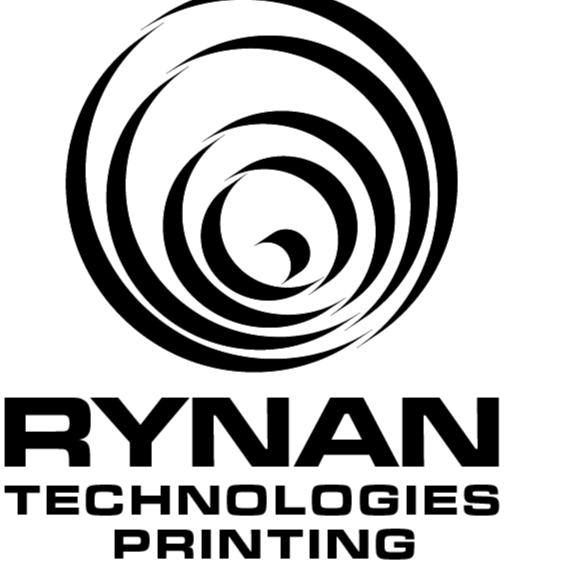
Innovation, Technology, Sustainability. RYNAN Printing is ready for Industry 4.0
From pandemic to Industry 4.0, what is in store for the coding and marking industry? As we innovate with better technologies with sustainability in mind, we offer a glimpse into Industry 4.0; and how connected systems fueled by data and machine learning will make the ‘smart factory’ a soon-to-be reality.
Never has there been a time that places more emphasis on traceability than now. With a raging pandemic threatening to uproot health systems, the pharmaceutical industry is tasked with the responsibility to properly display drug information, manufacturing and expiration dates, roll out vaccines quickly, and prevent counterfeit products from entering the market. Similarly, food and beverage items are required to have manufacturing details on production, use-by dates, and nutritional facts on both primary and secondary packaging.
With an uptake inhome deliveries resulting from the Covid-19 situation, the growing consumption of packaged food and e-commerce is driving the use of packaging materials, furthering the growth of the global coding and marking systems market. According to P&S Intelligence, the market size of the global coding and marking systems market is expected to surpass $7.5 Billion by 2030.
Industrial Inkjet Printers: The Move Towards Thermal Inkjet Technology
The current printing industry has moved towards inkjet printers for their ability to serve unique printing needs. Inkjet printers primarily come in two widely used technologies: Continuous Inkjet (CIJ) and Thermal Inkjet (TIJ).
Compared to CIJ printers that deliver a continuous stream of ink, TIJ is a type of drop-on-demand (DOD) inkjet technology that produces a droplet as required. Due to its cost-effectiveness and ability to work on more substrates, TIJ is fast becoming the choice of printing technology for food, pharmaceutical packaging, and beyond, on both porous and non-porous substrates.
At RYNAN, we pave the way for the next generation of innovative Thermal Inkjet (TIJ) technology by delivering reliable, low maintenance, easy to use, economical, and environmentally conscious solutions to the market.

Innovation At The Heart Of Our Production
Advancements in circuit board technology have greatly downsized the space needed for a TIJ machine. Our R20 printer series feature a compact 7” touchscreen controller which integrates easily into existing manufacturing and production lines without any need for a computer and can be operated anywhere in the production facility. Intuitive for easy operation, the universal controller connects up to two print heads simultaneously for high-speed printing.
RYNAN offers high-quality aqueous, solvent and UV LED curable inks for industrial printing applications. Our innovative aqueous inks are perfect for printing on flexible packaging and thin films, with enhanced fade and water resistance and excellent readability. Our solvent inks are also free from BPA and Benzophenone to conform with high safety standards while our UV LED curable inks print on more substrate types and are ideal for flexible foils susceptible to heat in the food packaging industry.
Technology Drives Our Efficiency
Technological advancements to our inks have increased decap time, allowing for intermittent printing with minimal production disruptions and intensive R & D work helped develop unique ink formulations that have increased non-porous substrate coverage. Furthermore, our ink management cartridge system automatically recognizes ink type and sets the ink parameters for optimal printing. These cartridges come with nozzle warming, auto-jet capabilities to extend cartridge lifetime, so you can focus on the print job at hand.

With the R20 Reach, printing on curved surfaces and uneven substrates is now possible. Thanks to a throw distance of 10mm with the TIJ technology, the print legibility is comparable to CIJ systems even at higher throw distance, making the R20 Reach a very efficient candidate for canning and bottling lines and uneven packaging and direct product printing, such as industrial components.
Less Wasteful, More Sustainable
As sustainability gains clout globally, businesses are increasingly seeking environmentally conscious printing solutions to reduce carbon footprint. TIJ printers consume up to 80% less power compared to CIJ printers. While CIJ systems use solvent inks with high volatile organic compounds (VOCs) which are released into the environment during printing, RYNAN develops TIJ inks that are more environmentally friendly. What’s more, not all of the solvent ink used in CIJ systems gets recaptured, spillage during periodic maintenance litters around in the work area and on printing machinery. Thus, additional solvents are required for cleanup. Our TIJ ink cartridges are self-contained, dispensing only what is necessary for printing, which significantly reduces VOC exposure and health risks.
Advancing Towards the Fourth Industrial Revolution: What Does Industry 4.0 Look Like?
We are now entering into Industry 4.0 - the Fourth Industrial Revolution. The Third Industrial Revolution may have adopted the use of computers and automation, but the Fourth Industrial Revolution will amplify the third wave with connected systems, big data, embedded sensors, cloud computing, AI, and machine learning to make the ‘smart factory’ a reality.
While most production lines today have automated processes, there is still a lack of connectivity between each individual process, often requiring human intervention to fill gaps, identify and report problems. The ‘smart factory’ in Industry 4.0 is one where systems are interconnected, sharing and analyzing data in real-time to optimize the production line.
Enabling Industry 4.0 Technology In The Coding And Marking Industry
Manufacturers need to adapt quickly by enabling technology towards a smart factory future. Below is a glimpse of how Industry 4.0 enabled technologies can drive end-to-end efficiency:
- Communication across a network of connected systems allows for real-time data collection and preemptive data analytics. When combined with coding automation software, this can greatly reduce downtime during cartridge changes or equipment failure.
- By integrating real time production data with predictive demand and inventory analytics, supply chain management and production schedule can be fully optimized.
- Utilizing sensors can alert manufacturers to potential problems and prevent unscheduled downtime (e.g. detecting abnormal levels in variables such as temperature/humidity/moisture that can affect print production or equipment not performing on par etc).
- Machine learning can analyze data gathered from sensors to automatically improve equipment performance and efficiency autonomously.
- Cloud-based computing can support remote viewing on how partners/customers' machinery operate without being physically on-site. This assists in a preliminary identification of any issues for routine maintenance and makes it easier for service support if a site visit is required.
- Robots can be used to handle intensive or repetitive tasks that previously required human intervention, such as the deployment of drones to remote parts of a plant.

Going Forward
The world is now in the midst of a global pandemic with high demand for a faster rollout of Covid-19 vaccines. Disruptions to production lines can be disastrous and today’s manufacturers are concerned with eliminating downtime and reducing risks from disruptions. In the future, artificial intelligence and the power of connectivity will enable manufacturers to react, adapt and evolve in real-time response to such unprecedented situations.
As the fight continues against the pandemic and the Fourth Industrial Revolution beckons, our goal at RYNAN is to emerge more productive, efficient and less wasteful in the coding and marking industry. Through the adoption of big data, automation, integration and connectivity, we can better anticipate volatile demands and develop smarter coding and marking systems that ensure your production lines keep running, no matter what.

Writer
References:
Coding and Marking Systems Market to Surpass $7,469.6 Million Revenue by 2030: P&S Intelligence, Cision PR Newswire (14 Oct 2020)
Coding and Marking Market - Forecast(2021 - 2026), IndustryARC

